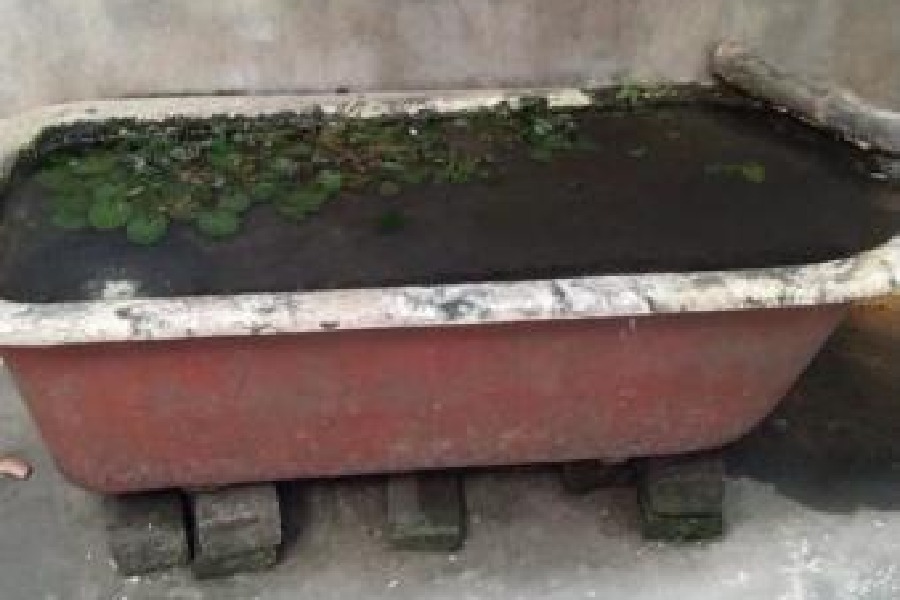A fish that eats mosquito larvae and is released by the Kolkata Municipal Corporation (KMC) in canals, ponds and pools of water at construction sites to prevent the spread of dengue is now much in demand among Calcuttans.
KMC sources said households in many neighbourhoods are releasing guppy, a freshwater fish that has emerged as a cheap and effective weapon against mosquito-borne diseases, in drains, water bodies and concrete reservoirs.
About three years back, in a south Calcutta ward, health workers would release guppy fish at around 10 locations every day.
“Now, our teams are releasing the fish at more than 20 locations daily. Many of those locations are inside residential complexes such as gardens and concrete reservoirs,” said a KMC official from the south Calcutta ward.
“Now, many residents are approaching us for guppy fish because it is unavailable in the market. They are releasing the fish in open reservoirs or places where water accumulates, the official said.
Some guppy varieties are popular as aquarium fish because they are cheap, not a threat to other fish, easy to keep and colourful. The guppy variety that the KMC uses in its fight against dengue can thrive in canals and artificial reservoirs.
A resident of a building in southeast Calcutta had a discarded bathtub in the garden.
“The woman asked for guppy fish and we gave her around 20. Now, there are hundreds of guppy in the tub and we often procure the fish from the house,” said an official in the KMC health department.
Experts said guppy males are ready for breeding activity two months after birth while females take three months. If a reservoir has 10 to 20 guppy fish, the count can reach around 2,000 in a year.
KMC vector control workers recently detected larvae of the Aedes aegypti mosquito, the primary transmitter of the dengue virus, in a water reservoir of an apartment block in Kasba.
“The team destroyed the larvae. We requested the KMC staff to give us guppy fish. The next day they gave us some and we released them in the water,” said a resident of the building.
A senior KMC official said the breeding of guppy fish has increased over the years. The civic health units in many of the 144 wards have small tanks where the fish is bred.
“Generally we do not supply guppy to residents. But when people ask locally, we make an exception to the rule. The fish is released by our vector control workers in places they deem appropriate,” the official said.
Debashis Biswas, the chief vector control officer of the KMC, said guppy fish do not survive in polluted water.
“Certain conditions have to be met to release the fish. The site must have water around the year and thewater should not be polluted. Guppy does not breed in polluted or dirty water,” said Biswas.
Biswas, however, cautioned that guppy fish cannot be the one-stop solution for dengue and other mosquito-borne diseases.
“The Aedes mosquito, the carrier of the dengue virus, breeds in small containers like green coconut shells, paper or earthen cups, and flower vases and tubs, among other sites. It is not possible to release the fish in these small containers. People have to remain alert and destroy breeding sites,” he said.
“Clean your surroundings and throw away accumulated water at least once a week. This will prevent mosquito breeding,” he said.











